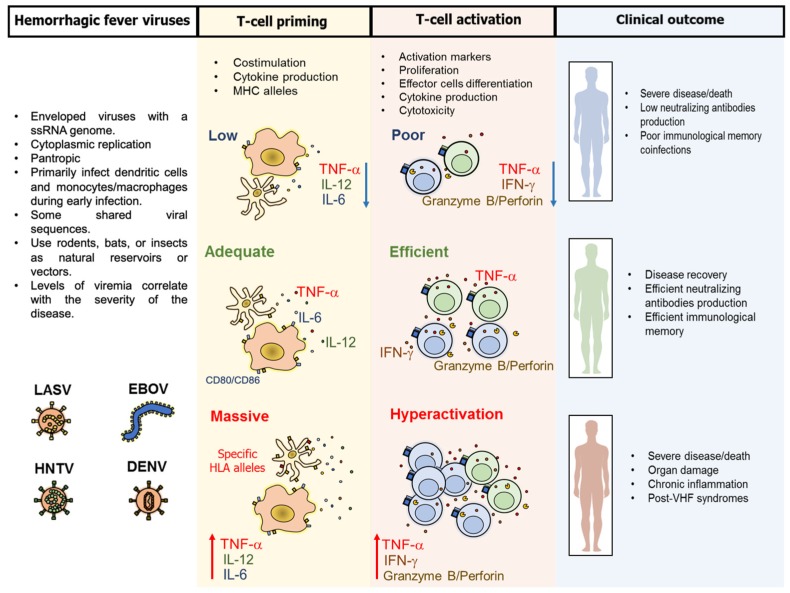Figure 1.
Common characteristics of viral hemorrhagic fever and the induced T-cell response. Lassa virus (LASV), ebola virus (EBOV), Hantaan virus (HNTV), and dengue virus (DENV), which share some virologic and epidemiological characteristics, primarily target dendritic cells and monocytes/macrophages during early infection, and induce three types of T-cell responses: 1. A low expression of costimulatory molecules (CD80/CD86), cytokine production and/or presentation of non-dominant epitopes, induces a poor T-cell activation, with low proliferation, low interferon (IFN)-γ and tumor necrosis factor (TNF)-α production and reduced cytotoxic potential. These defects can be responsible for severe disease/death, low induction of neutralizing antibodies, poor immunological memory and increased susceptibility to coinfections. 2. An efficient costimulation, cytokine production, and presentation of relevant epitopes under the context of protective HLA alleles, leads to optimal T-cell activation, which is reflected in disease recovery, induction of neutralizing antibodies and long-term immunological memory. 3. A massive costimulation, inflammatory cytokine production and expression of epitopes restricted by non-protective HLA alleles, leads to T-cell hyperactivation, with increased production of inflammatory cytokines that can lead to severe disease/death, organ damage, chronic inflammation and possibly to post-VHF syndromes.

